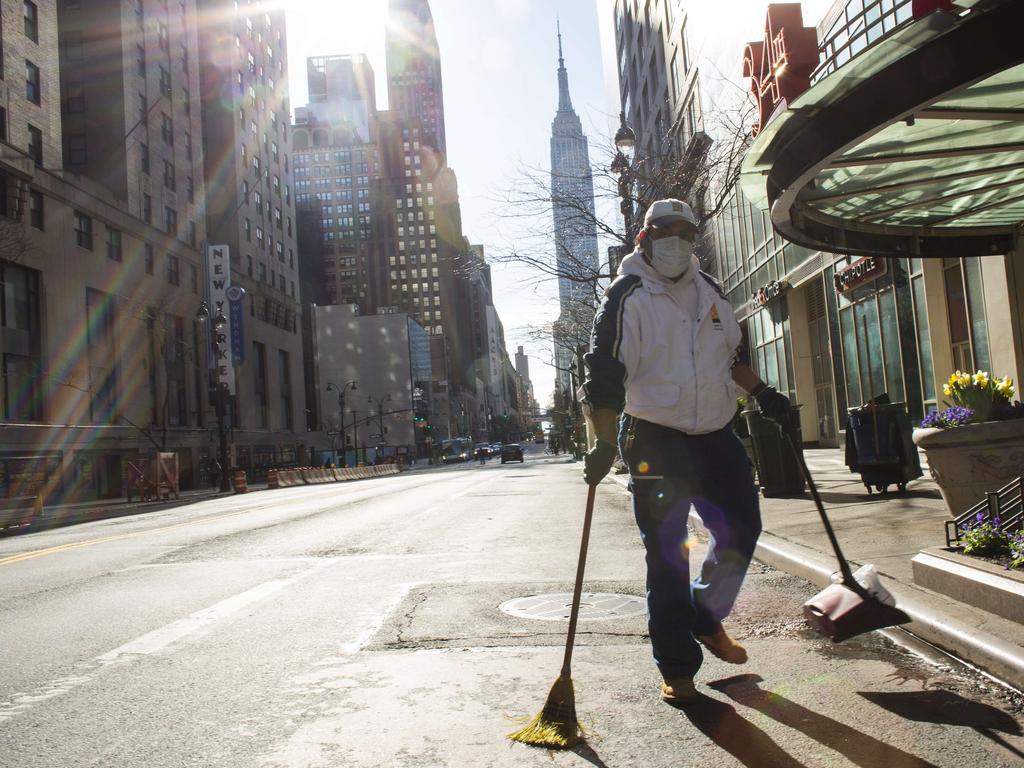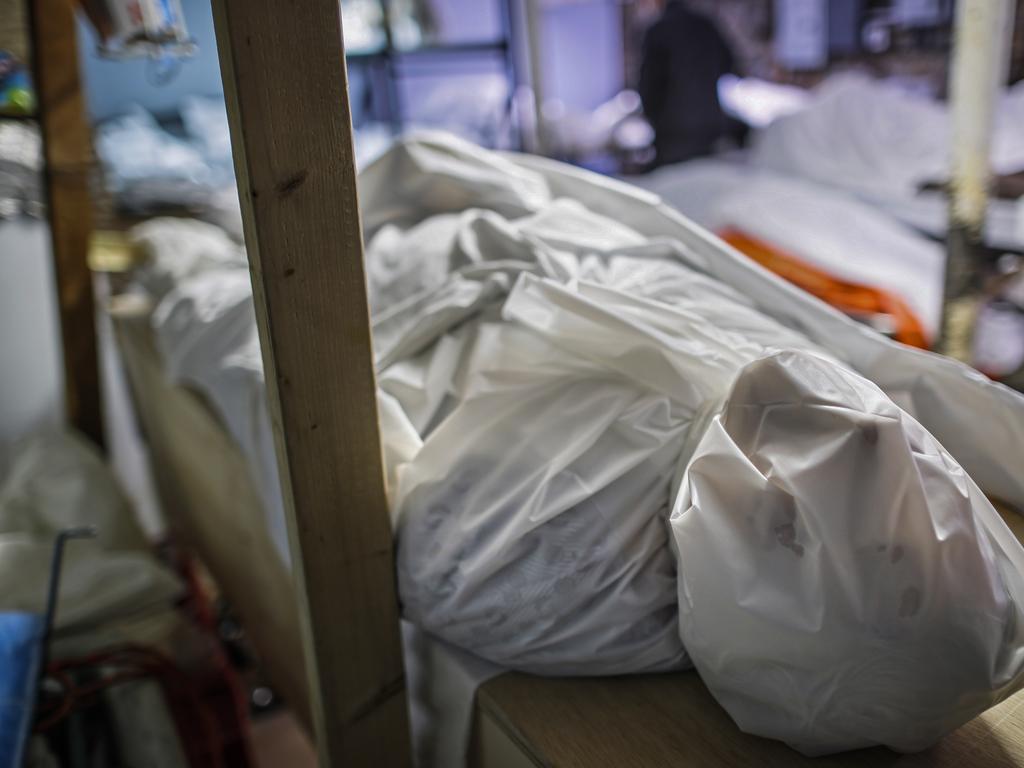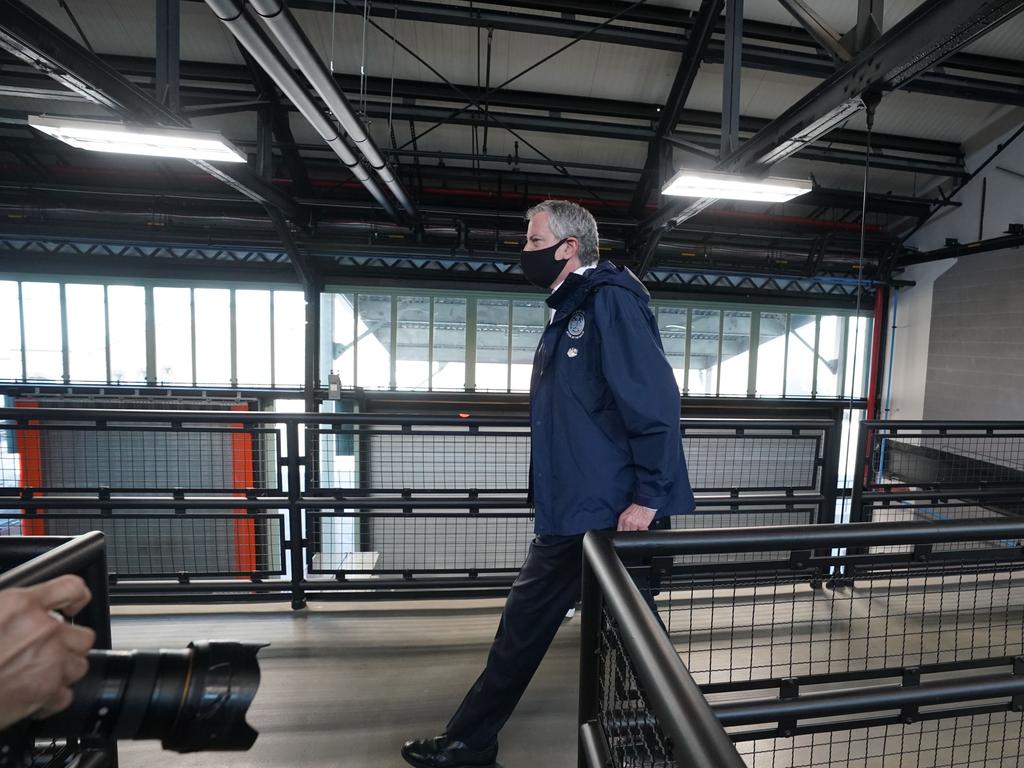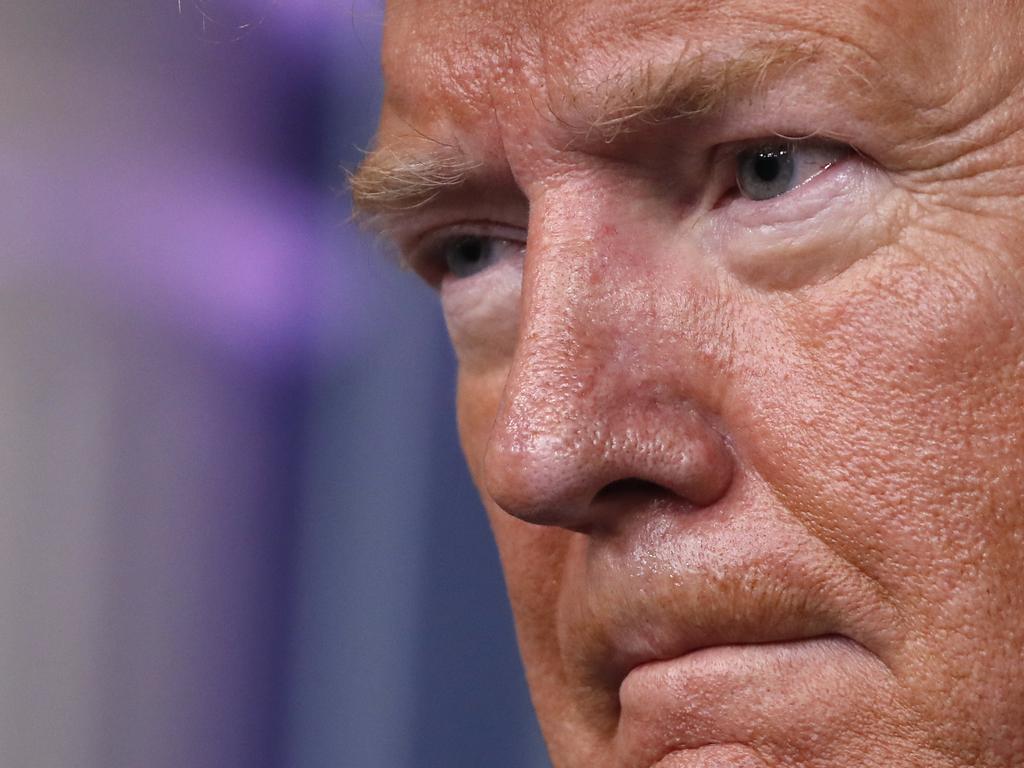Coronavirus: New York is now the deadliest place on earth
The city that never sleeps has always held a special place in our dreams, but the daily reality in Manhattan has become the stuff of nightmares.
Godzilla. Nazis from the Moon. A snap ice-age. New York has always borne the brunt of our horror stories. Now, with COVID-19, the nightmares have turned real.
New York has fallen. But it’s not to the zombies of World War Z.
The concrete jungle is silent. Except for the sound of sirens.
Meanwhile, the city that never sleeps is bringing out its dead.
It’s the new epicentre of the international coronavirus pandemic. And that’s not about to change any time soon.
Despite multitudes of warnings from the silver screen to dime-store comics, the Big Apple didn’t see this coming.
MORE: Follow the latest coronavirus news
MORE: Why the US is on the brink of catastrophe
With some eight million people living crowded into an area of just 470sq km, it’s a focal point of international tourism, trade and politics. And yet, warnings ranging from international epidemic specialists down to sandwich-board prophets failed to alert its governing authorities.
Now, its death toll is exploding exponentially.
At the time of writing, the figure was some 3202 - eclipsing the number of people killed at the World Trade Centre on 9/11. At the time of reading, it is no doubt much higher.
Such is the nature of an exponential pandemic.
At last count, 122,000 residents have the virus.
Things are so bad, a dip of just 36 deaths (down from 630 on Sunday) has been hailed as a sign of hope. But only the price of today, tomorrow, and the weeks after will tell.
“We could either be very near the apex, or the apex could be a plateau and we could be on the plateau right now,” Governor Andrew Cuomo said overnight. “You can’t do this day-to-day. You have to look at three or four days to see a pattern.”

THE DAWN’S EARLY LIGHT
US Surgeon General Jerome Adams told Fox News on Sunday: “This is going to be the hardest and the saddest week of most Americans’ lives.”
He compared the challenge to that of Pearl Harbor – the trigger for the US joining World War II. He compared it to 9/11 – only with nationwide impact.
He didn’t explain why it would get better next week.
Doctor Anthony Fauci, director of the US National Institute of Allergy and Infectious Diseases, offered a different scenario: “This next week is going to look bad because we are still not at that apex.”
That apex is yet to come.
It’s only a month since New York’s first COVID-19 case was reported.
Now, schools are closed, businesses are shuttered and makeshift hospitals are popping up everywhere from convention centres to the legendary Central Park.
Its leaders are so desperate they’re ordering inhabitants to wear masks – or even bandannas – when venturing out to the supermarkets for vital supplies.
“The coronavirus is truly vicious,” Governor Cuomo said. “It’s an effective killer. People who are very vulnerable must stay isolated and protected.”
Not that simple cloth masks do much good.
But something, in these circumstances, is better than nothing.

The National Tennis Centre is a case in point. It’s now filled with medical tents, and doctors enforcing triage rules. Only those most likely to recover are getting treatment.
Little more than a month ago, the same space was packed cheek-to-jowl with sports aficionados.
Now, New York State medical workers are wearing trash bags because there aren’t enough protective suits. They’re wearing makeshift masks and face screens.
They’re testing positive for the killer virus in droves themselves.
So far, three nurses and two doctors have died. Many more are sick.
In fact, the city’s first case was a healthcare worker who had returned from a trip to Iran. She tested positive on March 1. The second was a lawyer: infection source, unknown.
Which means the virus was already loose in the New York community.
Now, the National Guard patrols the almost empty streets. But their M16 assault rifles are as useless against this rampaging enemy as every other.
The world famous NYPD is equally helpless. And some 1400 of its ranks are themselves ill.

HIDDEN ENEMY
Governor Cuomo admits the virus was in his crowded city long before it was discovered.
New York packs 27,000 people in every 2.5 square kilometres.
“I have no doubt that the virus was here much earlier than we even know,” he said.
Which is why it found a multitude of unsuspecting hosts in the crowded city’s subways, cafes, nightclubs and offices.
COVID-19 droplets could sit on stainless steel hand rails and plastic tabletops for up to 72 hours before infecting another.
“Our closeness is what makes us special. Our acceptance, our openness is what makes us special. It’s what makes us feel so connected one to another. It’s what makes us so accepting of one another. It is the closeness that makes us the human beings that we are,” Governor Cuomo said.
“It is also that closeness and that connection and that humanity and that sharing that is our greatest strength, and that is what is going to overcome at the end of the day. I promise you that.”
But the city’s wealthy have long since fled the city. Their luxury high-rise apartments and prestige properties largely stand empty.
Governor Cuomo declared a state of emergency on March 7. On March 12, all gatherings of 500 or more were banned.
Four weeks later, New York is yet to reach the peak of its epidemic growth curve.
This is despite COVID-19 normally taking just two weeks to incubate and display symptoms in its victims.
Which means it continued to spread, despite these restrictions.
Broadway. Times Square. The MET. Manhattan’s stores. All were closed too late to “flatten the curve”.
New Yorks schools were closed on March 15. The effects of this move should be starting to appear in the numbers now.
Is that the source of the weekend’s small, but hopeful, fall?
“This is not a short-term situation … It is going to be four months, six months, nine months,” Governor Cuomo told local media.

PANDEMIC HARBOUR
Governor Cuomo is not holding out much hope.
“All we’re trying to do is slow the spread. But it will spread – it is that contagious,” he said.
He believes between 40 and 80 per cent of New York State’s residents will get the virus.
It’s on track to reach the higher number.
The number of cases in the district has been doubling every four days. We know this because New York has had – by far – the highest rate of testing in the United States.
Those tests are becoming scarce.
But the city’s overflowing hospitals are more than enough evidence of the virus’ relentless spread. They’re in the halls, the passages, the store rooms. Patients are lined up in the ambulance emergency delivery bays.
More than 11,000 emergency patients are crammed into hospitals which offer just 3000 intensive care beds.
Many of those patients are now hospital staff.
Weeks of rationing vital masks, gloves and other personal protection equipment (PPE) is taking its toll on the city’s medicos. On top of those already dead, more than 200 nurses are sick.
That’s because they’re tired. Hungry. Demoralised.
“We’re dropping our standards just to do what we need to do,” says Bronx paramedic Aline Reich. “This is not going to stop. Honestly, I’m scared.”
And nowhere near all the ill are aged or already unhealthy.
“So many patients are not fitting the picture that we’ve been told from China or Italy. This is not just elderly patients; it’s anyone,” a Mount Sinai Morningside Hospital doctor told Bloomberg.
All the city’s ventilators are committed. Its critical medical supplies are depleted.
Yet the numbers of sick continue to explode.
And the US navy hospital ship Comfort, sent by President Donald Trump is designed to treat non-COVID-19 patients. It remains docked at the New York piers, largely empty.

STATE OF THE UNION
The morgues are full. Which is why so many refrigerator trucks can be seen parked outside New York hospitals. More are on their way. In all, they’re expected to be loaded with more than 16,000 bodies.
But New York is just a prophecy of what is in store for the rest of the United States.
New Orleans. Detroit. All are equally afflicted.
And other state capitals aren’t far behind.
“The United States, which was already self-isolating under the presidency of Donald Trump, is now seriously unwell,” writes the Lowy Institute’s Michael Fullilove.
“The world is facing a global health crisis and a global economic crisis, and our last line of defence is The Donald.”
Some 240,000 US citizens are expected to die, under some pandemic models.
Some state governors are up in arms. Others are in denial.
Illinois Governor J.B. Pritzker called Mr Trump incompetent, saying that he “does not understand the word ‘federal’”. This was in response to the President telling state governors to find their own medical supplies.
“If he were right, why would we ever need a Federal Emergency Management Agency?” Governor Pritzker asked. “We don’t have a Defence Production Act. There’s no way that we could stockpile in anticipation of a pandemic that no one anticipated. And yet the federal government is responsible for doing precisely that.”
Meanwhile, down south in Georgia, Governor Brian Kemp ordered popular vacation spot Tybee Island to re-open its beaches because people needed “fresh air and exercise”. And across the United States, the faithful are vowing to pack church halls “protected by the blood of Christ” to celebrate Easter.
It may all end up causing the US pandemic curve to spike even higher.
That’s because messages are mixed.
A month ago, Mr Trump assured his listeners the virus would “disappear”, with new cases likely to have fallen “down to zero” by now. That message has since changed to the pandemic being “the worst thing the country has probably ever seen”.




